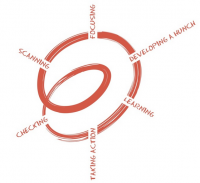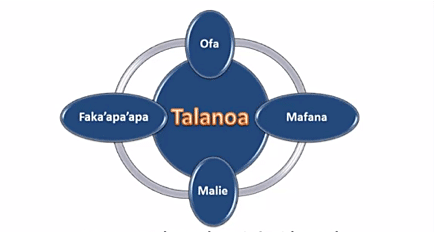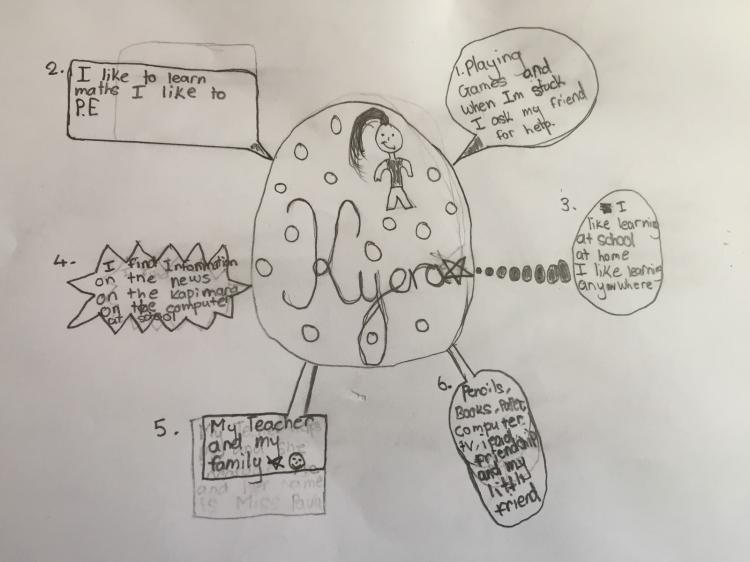Collaborative inquiry using Talanoa – A communication process
Tags: Teacher inquiry | Collaborative tools | Primary |
Porirua East schools: Cannons Creek, Windley, and Holy Family conducted an inquiry to understand and enhance impacts on learning among target students in 2015 and 2016.
They used Talanoa and Spirals of Inquiry as frameworks to support their teachers in changing their practice.
Talanoa: A process for communication and learning
Talanoa is "a personal encounter where people story their issues, their realities and aspirations".
Talanoa identifies how Pasifika peoples engage in communicating with others. All four aspects of Talanoa play an important part in conversations with learners, parents and teachers:
- Ofa – Love
- Mafana – Warmth
- Malie – Humour
- Faka’apa’apa – Respect
Talanoa can be used to:
- build/strengthen relationships with learners and their communities
- know the learner
- engage learners in the learning through the four aspects – Ofa, Mafana, Malie, and Faka’apa’apa.
Impact of Talanoa on relationships in the Porirua cluster
Introducing Talanoa at the beginning of the year provided a positive means of communication for everyone. Throughout the inquiry, Talanoa helped teachers:
- build stronger relationships with one another
- build trust and share their inquiries openly.
Teachers noticed a difference in the way they connected with students, parents, families, and communities.
Scanning for impacts on student learning
Making learning maps
Initially, the teachers engaged in the scanning phase of the inquiry. Using the Talanoa process as a guide, the teachers supported learners to create learning maps.
The maps showed:
- how they learn
- what impacts on their learning.
Students used images and words to represent the impacts.
The 7 Principles of Learning as a guide for inquiry
Referring to the 7 Principles of Learning , the teachers developed questions to guide their students through the map-making process:
- How do you know what you’re meant to be learning?
- What helps you learn internally? (inside you)
- What helps you learn externally? (outside of you…places/tools/people)
- What prevents you from learning?
- Name two adults at school who believe you can be successful.
- How do you know when you’ve been successful in class?
- Where can you get help when you find something hard?
- Can you be yourself in class?
- What sports/hobbies do you have?
- What outside school responsibilities do you have?
Using google to collaborate online
During the scanning phase, the teachers set up a collaborative Google Doc to connect across schools, helping them to:
- communicate ideas
- show each other what they had done
- give each other feedback
- monitor progress
- reflect.
Focusing: Finding the biggest impact
During the focusing phase of the inquiry, teachers worked collaboratively to identify common themes across their scanning. They recorded conversations and shared them with each other. The common themes that emerged were student voice and learner agency. Teachers believed that learners should be able to:
- talk about their learning
- express what they had learned
- have ownership over their learning.
They related these themes to the 7 Principles of Learning . The four related principles in this case were:
- learners at the centre
- the social nature of learning
- recognising individual differences
- building horizontal connections.
Developing a hunch: Focusing on teacher practice through situation analysis
In the developing a hunch phase of the inquiry, teachers conducted a situation analysis in order to critique their own practice.
Situation analysis is a process that encourages inquiry into practices to fully understand a student’s achievement challenge. Situation analysis involving the perspectives of family, whānau, and community can help to identify practices leading to achievement challenges.
(Timperley and Earl, 2012)
During the situation analysis, teachers discovered the need to focus on building learner agency through:
- giving learners effective feedback and feedforward on their learning
- asking more questions about learners and their whānau
- involving parents in learning and connecting in multiple ways with them.
Learning: Building strategies
Examples of teachers’ self-identified learning goals and tools and resources for implementing strategies
| Learning goal | Tools and resources |
|---|---|
| Learn about effective ways to give learners feedback and feedforward with a view to building self-regulating learners | Clarity in the Classroom – a book about formative assessment to help build self-regulating learners Effective Feedback – information on Assessment Online |
| Engage all parents in conversations about their children’s learning | Ruia – School-whānau partnerships |
As they move into 2016, the teachers engaging in the learning and taking action phases of the inquiry will continue to change their practices. The Learning phase will be an ongoing, in-depth process for the teachers.
Impacts of inquiry on teachers
- The Talanoa process and working collaboratively resulted in more interaction between teachers.
- Working online meant less isolation, increasing the power of their inquiry.
- Working together through a spiral of inquiry impacted positively on how teachers worked with learners and parents overall.
- The 7 Principles of Learning gave teachers a clearer understanding of the different ways students could learn.
- The teachers became facilitators enabling learners to become self-regulated learners.
Impacts of inquiry on learning
The following table illustrates the early signs of impacts on learners. It has examples of actions taken and the future-focused education themes from the 7 Principles of learning
they relate to.
| Impact | Principle of learning |
|---|---|
| Learners more able to talk about their learning Teachers enabled learners to have more ownership over their learning as they were encouraged to talk more about what they had learned and what their next steps were. | Learners at the centre Learners were encouraged to actively engage in their own learning, developing an understanding of their own actions. |
| Learners used the Talanoa process to work with each other New entrants were supported to talk together more, rather than having a heavy focus on teacher-directed practices. A parent came in to tell the teacher that their son was talking more at home about his learning at school – they were amazed at the change in their son.
| The social nature of learning Learners were actively encouraged to collaborate through well-organised cooperative learning strategies. |
| Reading and writing results improved for learners In one example, a teacher used Google Docs with learners to enable more immediate feedback as they worked on their writing. Learners were able to collaborate in the docs to give each other feedback. | Recognising individual differences Learners were able to operate in adaptable learning environments that supported individuals and groups as a whole. Google Docs were a key tool in enabling further agency for learners as classes moved away from one-size-fits-all approaches. |
The teachers are continuing with their inquiry into 2016. The Learning, Taking Action, and Checking phases have yet to be completed, although many teachers are exploring these phases already.


